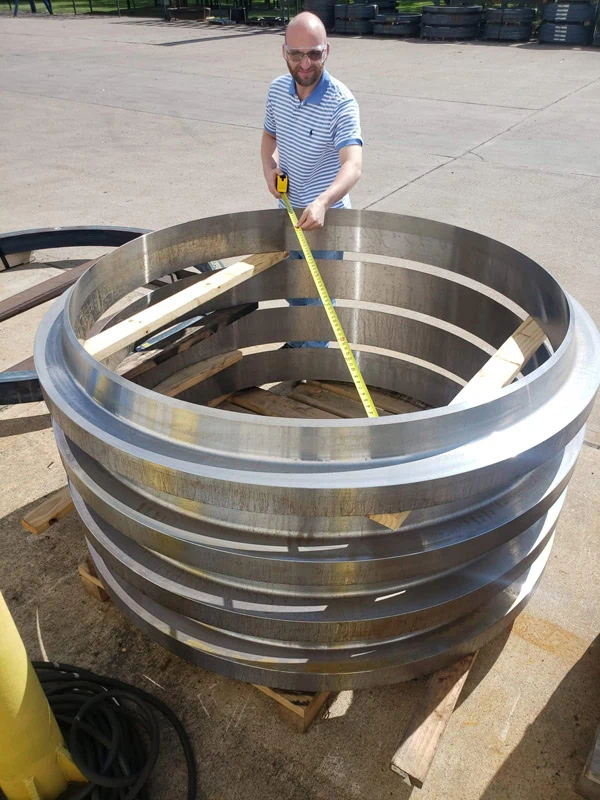Flanges fit around pipes and connect them together. These systems operate within extremely specific parameters, meaning the sizing of each component must be accurate to enable safe and efficient performance. Use this guide on how to measure flange size to ensure you’re getting exactly the right part for every job.
Tools for Measuring Flange Size
Technicians can use multiple methods for measuring flange size, depending on the tools that are available and how accurate the measurements need to be. Some of the most common tools for measuring flange size include the following:
- Calipers. Industrial technicians can use calipers to measure the outer diameter (OD), inner diameter (ID), flange thickness, and bolt hole diameter by hand. Suitable for most use cases, calipers generally provide quick and accurate measurements.
- Tape measures. Technicians can also use tape measures to find the outside diameter and the bolt hold diameter, especially on larger flanges. However, they are less accurate than flanges and won’t easily find the other measurements.
- Flange measuring tools. Flange gages and ring gages are specialty tools for measuring flanges. They have the contours of most standard flange sizes, and operators can adjust the fine gradations to get an accurate read of the ID, OD, and bolt hole.
Step-by-Step Guide to Measuring
Knowing how to measure flange sizes can lead to faster repairs and fewer errors when ordering parts. Follow these steps to measure industrial flanges:
Check for Stamped Markings
Before you start measuring, look for stamped specifications on the outside of the flange. These markings can include:
- Compliance standards
- Pressure rating
- Material
- Size
Manufacturer data sheets often will specify the required flange sizes. You can determine the right size for different pipes and systems for added confirmation that you’re using the correct fittings for your piping system.
Reference ASME/DIN Standards
In addition to getting the right size of flange, it also needs to comply with different standards based on the pressure, contact materials, and other system variables. Familiarizing with ASME, DIN, or ISO standards for the flange helps ensure it’s compatible with the system requirements.
Identify the Flange Type
Once you know the size and compliance requirements, identify the type of flange based on how it fits and closes into place. Some common types of flanges used in industrial systems include:
- Blind flanges. These flanges seal piping systems.
- Slip-on flanges. These flanges simply slip into place around pipes with a snug but relatively loose fit. They work best in low-pressure systems.
- Threaded flanges. Threaded flanges fit into place over threaded pipes, and the threaded connection eliminates the need for welding.
- Weld neck flanges. These flanges must be welded into place. They work well with high-pressure systems because the welded connection is tight and strong.
Common Mistakes in Measuring
Knowing common mistakes can also help you master the process. As you measure flanges, take the time to measure all the dimensions (ID, OD, thickness, bolt measurements, and so on) without skipping any steps. Also, try to use the most accurate tools you have available, preferably calipers for diameters and micrometers, for measuring the thickness.
Two other common mistakes are misidentifying the type of flange and not checking material compatibility. Keep in mind that the type of flange can affect your measurements and size requirements.
Contact Coastal Flange
The right flange is essential for keeping pipe systems operational, leak-free, and safe, and knowing how to measure flange sizes and what types of flanges to buy is a critical step. At Coastal Flange, we manufacture and distribute a wide array of pipe flanges with different sizes, fitting styles, materials, and features. Our products range in size from 1/2″ OD to 200″ OD, available in blind, lap joint, slip-on, socket weld, threaded, and weld neck varieties.
We manufacture our pipe flanges in our Jersey Village, TX facility, right in the middle of critical oil, gas, and petrochemical processing regions, and our company has over 100 years of experience providing high-quality flanges for chemical and high-pressure applications.
Contact us for flange measurement tools or request a demo today.

